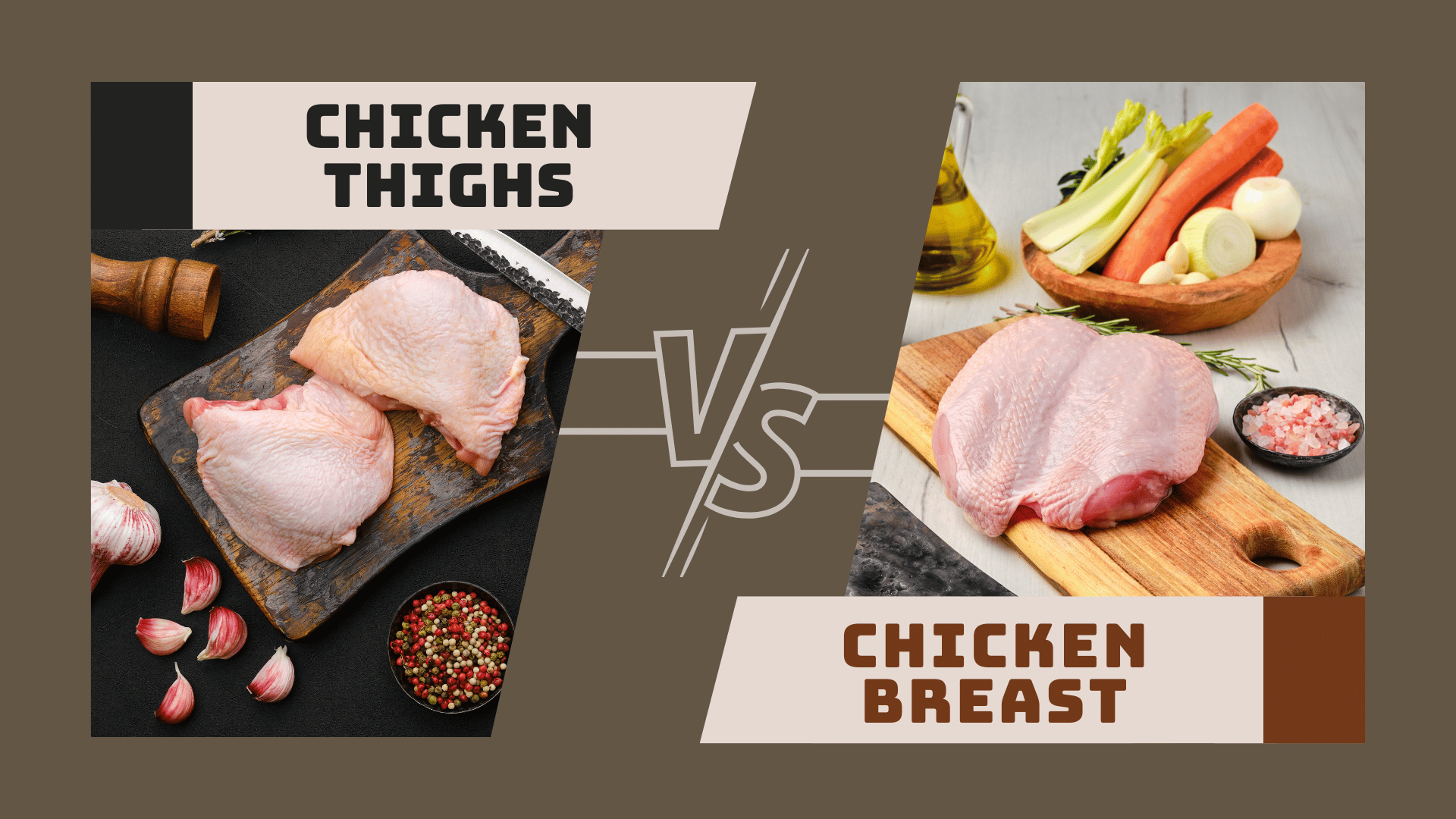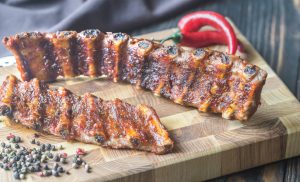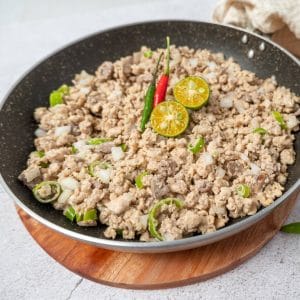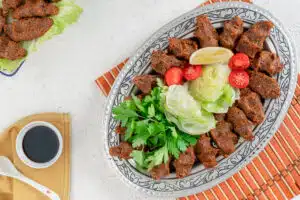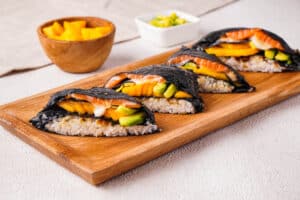Chicken Thighs Vs. Chicken Breast: What’s The Difference?
Important Note: When you buy through our links, we may earn a commission. As an Amazon Associate we earn from qualifying purchases. Content, pricing, offers and availability are subject to change at any time - more info.
Chicken is a popular, nutritious, and versatile white meat we all reach for when making a quick and wholesome lunch or dinner. Stores sell whole chickens, bone-in pieces, and boneless, skinless cuts – it’s tough to know which is healthiest and tastiest. What’s the difference between chicken thighs and chicken breast?
Chicken thighs and chicken breast are cuts of poultry. They differ in the type of meat, price, nutritional value, and flavor. Chicken breast’s white meat is pricier and higher in protein but can tend to dry out during cooking. Chicken thighs’ dark meat is fattier but cheaper and more flavorsome.
The most widely-eaten meat in the United States, chicken is an excellent source of protein and other nutrients. Read on if you’re wondering which cut to include in your grocery basket. Let’s look at the difference between two favorite cuts, chicken thighs and chicken breast.
- What Are The Differences Between Chicken Thighs and Chicken Breast?
- Chicken Thighs Vs. Chicken Breast: Difference in Cut
- Chicken Thighs Vs. Chicken Breast: Nutritional Value
- Winner, Winner, Chicken Dinner
What Are The Differences Between Chicken Thighs and Chicken Breast?
Although both are chicken, there are several differences between chicken thighs and chicken breast, for example:
- Cut
- Price
- Flavor
- Nutritional value
- Cooking method.
Let’s explore these contrasts in more detail.
Chicken Thighs Vs. Chicken Breast: Difference in Cut
The most apparent difference between chicken thighs and breast is that they are different cuts or pieces of the chicken. Both are available bone-in, boneless, with skin and without skin. How else do they differ?
What Cut Are Chicken Thighs?
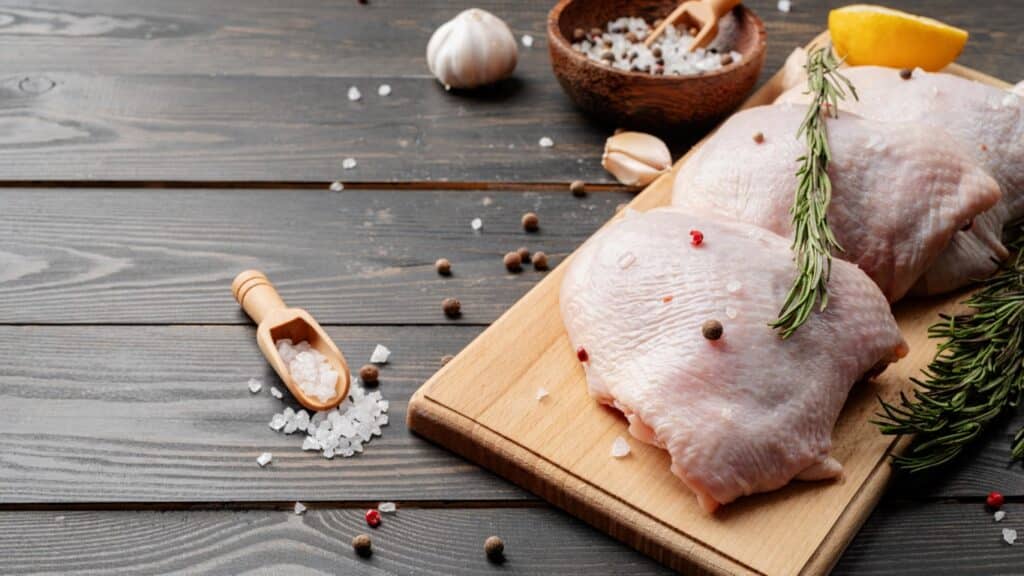
The chicken thigh comes from the upper part of the chicken’s leg, above the knee joint. Below the joint, you’ll find the drumstick. Thigh cutlets have bone and skin attached, while thigh fillets have the skin and bone removed. If the thigh still has the drumstick attached, the cut is called Chicken Maryland.
Because a chicken’s legs are more active than the breast, the thigh contains more myoglobin, a molecule that provides muscles with oxygen. The myoglobin makes the thigh meat redder when raw and pinkish-brown when cooked. For this reason, chicken thighs are referred to as dark meat, which makes them less appealing to many shoppers, although others argue that they have more flavor.
What Cut Are Chicken Breasts?
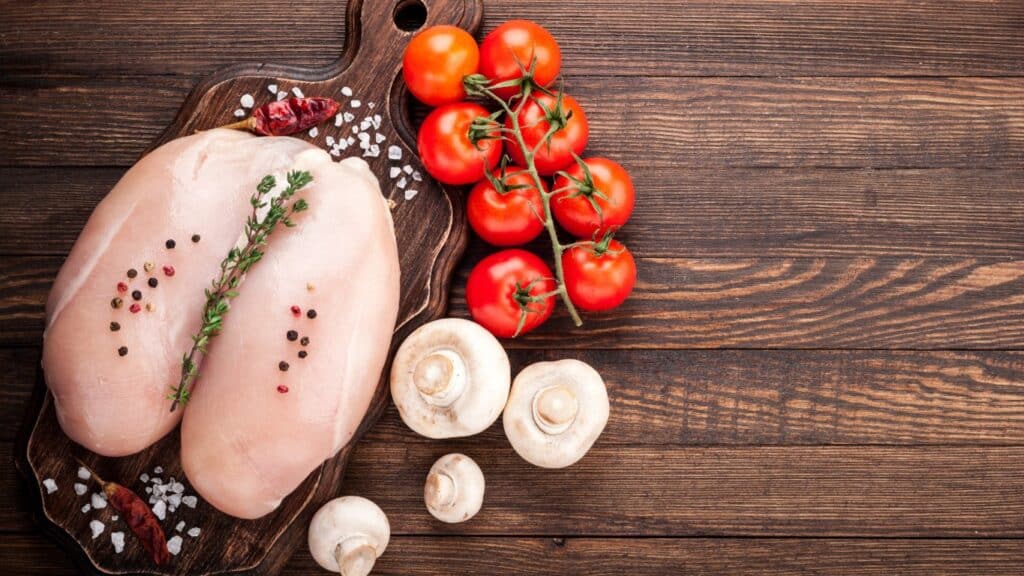
Chicken breasts are cut from the pectoral muscles on the breast or underside. Each chicken has only one breast, but because the breast comes in two halves that are separated during butchering, each half is sold as a single breast.
The meat from a chicken breast is lean, white, and high in protein, so a chicken breast is the most desirable chicken cut. It is usually sold in fillets or smaller tenders, without bone or skin.
Chicken Thighs Vs. Chicken Breast: Price
Another significant difference between chicken thighs and chicken breast is the price.
Why Are Chicken Thighs Cheaper?
Chicken thighs are considered an affordable chicken cut, as many people find their dark meat unappetizing. Bone-in thighs with skin will cost you less than boneless, skinless thighs.
Why Is Chicken Breast More Expensive?
Chicken breast is more expensive than the thighs, wings, and drumsticks because of the appeal of the high-protein white meat. Filleted breasts (without bone or skin) are the priciest cut of chicken.
Chicken Thighs Vs. Chicken Breast: Flavor
The debate over which chicken cut has more flavor has raged for years, with fans on both sides.
Are Chicken Thighs More Flavorful?
Fans of chicken thighs argue that the fattier, dark meat has far more flavor, tenderness, and juiciness than the drier white meat of the breast. Bone-in, skin-on thighs are favored for their rich, intense taste.
Is Chicken Breast More Flavorful?
Chicken breast has very little fat, which tends to give meat flavor. Fans enjoy the blander taste of chicken breast, arguing that you can add herbs, spices, and flavorings to the meat as it is so versatile.
Chicken Thighs Vs. Chicken Breast: Nutritional Value
Because both are cuts of chicken, chicken thighs and chicken breast contain similar amounts of iron, sodium, phosphorus, zinc, vitamins A, B, and E, and minerals. However, they differ in terms of fat and protein levels.
How Much Fat And Protein Do Chicken Thighs Contain?
A 170g skinless chicken thigh contains 9g of fat and 3g of saturated fat.
In a chicken thigh providing 209 calories, 53% of calories come from protein and 47% from fat. However, this fat is the so-called good HDL or monosaturated fat, high in vitamin E and good for the heart.
This fat percentage doesn’t make chicken thighs unhealthy: removing the skin from chicken thighs gets rid of unwanted saturated fats and reduces the calories by half.
Because of the healthy fats, the meat is moist and juicy, so chicken thighs are sought after by keto and LCHF enthusiasts.
How Much Fat And Protein Does Chicken Breast Contain?
A typical 170g skinless chicken breast contains 3g of fat and 1g of saturated fat. Once cooked, chicken breast has 54g of lean protein.
A chicken breast comes in at only 165 calories, with 80% of calories from protein and 20% from fat. This ratio makes chicken breast the ideal low-fat, high-protein meat, beloved by bodybuilders and slimmers.
Chicken Thighs Vs. Chicken Breast: Cooking Method
Chicken is an all-round versatile ingredient, forming a blank canvas for endless recipes.
Because of the varying amounts of fat in the meat, chicken thighs and chicken breast benefit from different cooking methods to bring out the most flavor.
The ideal cooking method depends on whether your chicken is skinless, boneless, or bone-in. Chicken with bones always takes longer to cook but does produce more flavorful moist meat.
Best Ways To Cook Chicken Thighs
Chicken thighs contain more fat than chicken breast, so they tend to produce a richer, heartier meal. The advantage of this extra fat is that it’s almost impossible to overcook chicken thighs, making them a forgiving ingredient.
Here are some tasty ways of preparing chicken thighs:
- Frying: Chicken thighs lend themselves to being soaked in buttermilk, dredged in seasoned flour, and fried until crispy.
- Stir-frying: Slice thigh fillets, marinate with Asian flavors like ginger, garlic, and lemon juice, and sear in a pan as part of a stir-fry.
- Casseroles: Use thigh fillets or cutlets in a slow-cooked stew or Instapot.
- Roasting and grilling: Chicken cutlets with their skin are delicious roasted, baked, or grilled on the BBQ.
Best Ways To Cook Chicken Breast
Chicken breast, and fillet, in particular, are versatile but easy to dry out and stick to the pan. To avoid over-cooking chicken breast, use a meat thermometer and stop cooking it once the meat measures an internal temperature of 160⁰F (71⁰C).
The ideal cooking methods for chicken breast are:
- Frying: Chicken breasts and tenders are fantastic breaded or crumbed, then fried.
- Grilling: Flash-grill marinated chicken breast.
- Stir-frying: Slice up fillets, marinate, and stir-fry with seasonal vegetables.
- Baking: Stuff the chicken breast with your favorite filling and bake in the oven.
- Poaching: Gently cook chicken breast, then shred the meat to use in sandwiches, salads, and soups.
Winner, Winner, Chicken Dinner
There is no clear winner in the food battle between chicken thighs and chicken breast. Fans of chicken thighs love their affordability, rich flavor, and succulent versatility. Chicken breast fans look for the low-fat, high protein ratio and enjoy the quick-cooking ease of white meat.
